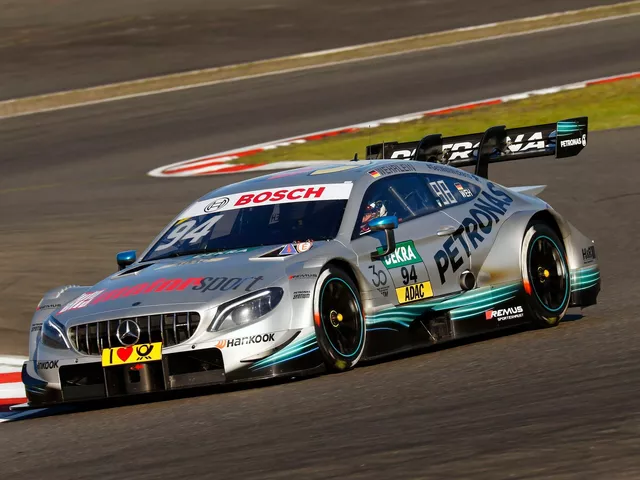
Introduction: The Battle of Racing Titans
As a racing enthusiast, I've always been intrigued by the ongoing debate about whether Formula 1 (F1) drivers are better than IndyCar drivers. Both of these prestigious racing series have their unique characteristics and challenges, and each attracts some of the world's top talents in motorsports. So, in this article, I will explore various aspects of these two racing series and try to determine if one group of drivers truly stands above the other. Let's dive into this exhilarating discussion!
Driving Skills: The Art of Control
One of the most significant differences between F1 and IndyCar racing is the nature of the tracks and the driving skills required. F1 circuits are more diverse, featuring a mix of high-speed straights, tight corners, and elevation changes. IndyCar races, on the other hand, predominantly take place on oval tracks, which emphasize high speeds and close wheel-to-wheel racing.
This difference in track configuration means that F1 drivers must master a wider range of driving skills, including precise car control, braking, and overtaking maneuvers. IndyCar drivers, while still needing excellent car control, must focus more on maintaining consistently high speeds and making split-second decisions in traffic.
It's hard to say which skill set is more difficult to master, but F1 drivers' ability to adapt to various track layouts may give them a slight edge in this category.
Car Technology: The Ultimate Machines
Both F1 and IndyCar vehicles are highly advanced machines, but they differ significantly in terms of technology and design. F1 cars are generally lighter, more aerodynamic, and feature more advanced electronics and hybrid power systems. This allows them to achieve higher speeds and better cornering abilities than their IndyCar counterparts.
The more sophisticated technology in F1 cars means that drivers must have a deep understanding of their vehicle's systems and be able to make adjustments on the fly. IndyCar drivers, while still needing technical knowledge, rely more on their raw driving skills and intuition.
In terms of car technology, F1 drivers may have a slight advantage due to their familiarity with more complex systems and the need to constantly adapt to new innovations.
Fitness and Endurance: Pushing the Limits
Both F1 and IndyCar racing are physically demanding sports that require drivers to be in peak physical condition. The high G-forces experienced during cornering, braking, and acceleration put a tremendous strain on a driver's body, and maintaining focus and concentration throughout a race can be mentally exhausting.
F1 races tend to be shorter than IndyCar races, with the average F1 race lasting around 90 minutes, while IndyCar races can last up to 3 hours or more. This means that IndyCar drivers may need greater endurance and stamina to maintain their performance over longer periods. However, F1 drivers must cope with more frequent high-G-force maneuvers due to the nature of the tracks.
In terms of fitness and endurance, it's difficult to determine a clear advantage for either group of drivers, as both face unique physical challenges in their respective series.
Team Strategy: The Importance of Cooperation
Both F1 and IndyCar racing require a high level of teamwork and cooperation between drivers and their teams. From race strategy and car setup to pit stop coordination, the success of a driver is often heavily influenced by the performance of their team.
F1 teams tend to be larger and better-funded, allowing them to invest more in technology, personnel, and resources. This means that F1 drivers often have access to more extensive support systems, including engineers, data analysts, and trainers. IndyCar teams, while still highly professional and competitive, often operate with smaller budgets and staff.
Based on team resources and support, F1 drivers may have a slight advantage in terms of their ability to execute complex strategies and adapt to changing race conditions.
Racecraft: The Art of Overtaking
Overtaking is a critical skill in both F1 and IndyCar racing, as it can determine the outcome of a race or even a championship. In F1, overtaking is often more difficult due to the aerodynamic turbulence created by the cars, which can make it challenging to follow closely and attempt a pass. This means that F1 drivers must be highly skilled in timing, positioning, and executing overtaking maneuvers.
IndyCar racing features more frequent overtaking opportunities due to the nature of the oval tracks and the draft effect created by the cars. This means that IndyCar drivers must be adept at reading traffic and making quick decisions to capitalize on passing opportunities.
While both F1 and IndyCar drivers need exceptional racecraft, the unique challenges of each series make it difficult to determine a clear advantage for either group of drivers.
Adaptability: Rising to the Challenge
As mentioned earlier, F1 drivers must adapt to a wide variety of track layouts and conditions throughout the season, which requires a high level of versatility and adaptability. Additionally, F1 regulations and car designs change more frequently than in IndyCar, meaning that F1 drivers must be able to quickly learn and adapt to new technologies and driving techniques.
IndyCar drivers also need to be adaptable, as they compete on a mix of oval tracks, road courses, and street circuits throughout the season. However, the greater stability of IndyCar regulations means that drivers have more time to become familiar with their cars and driving techniques.
In terms of adaptability, F1 drivers may have a slight edge due to the ever-changing nature of the series and the need to constantly evolve their skills and knowledge.
Conclusion: The Ultimate Verdict
After examining various aspects of F1 and IndyCar racing, it's clear that both groups of drivers possess exceptional skills, knowledge, and dedication to their craft. While F1 drivers may have a slight advantage in some areas, such as adaptability and familiarity with advanced technology, IndyCar drivers also excel in other aspects, such as endurance and racecraft.
Ultimately, the question of whether F1 drivers are better than IndyCar drivers is a matter of personal opinion and will likely remain a subject of debate among racing fans for years to come. What is undeniable, however, is the passion, skill, and determination that both F1 and IndyCar drivers display every time they step into their cars and take to the track.




